15 Must-See Attractions In Hue, Vietnam’s Peaceful Cultural Gem
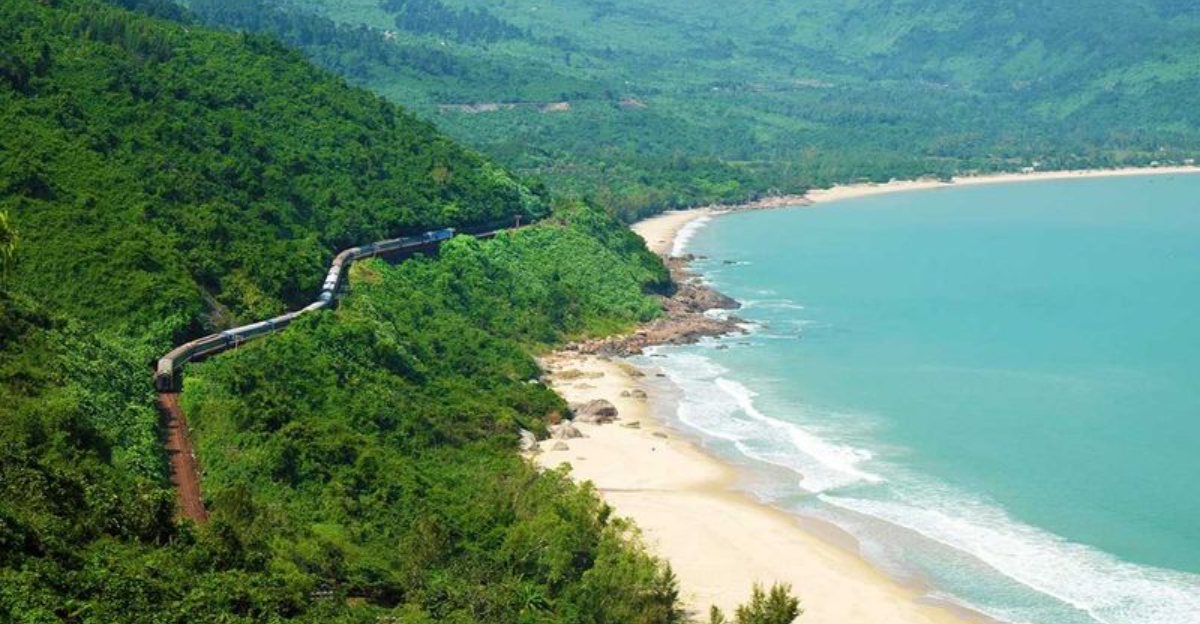
Nestled along the banks of the Perfume River in central Vietnam, Hue stands as a living museum of Vietnam’s imperial past.
This former royal capital brims with ancient temples, ornate tombs, and a magnificent citadel that tells stories of a bygone era.
Whether you’re a history buff, food enthusiast, or nature lover, Hue’s charm will captivate you with its perfect blend of cultural depth and natural beauty.
1. Imperial City Hue
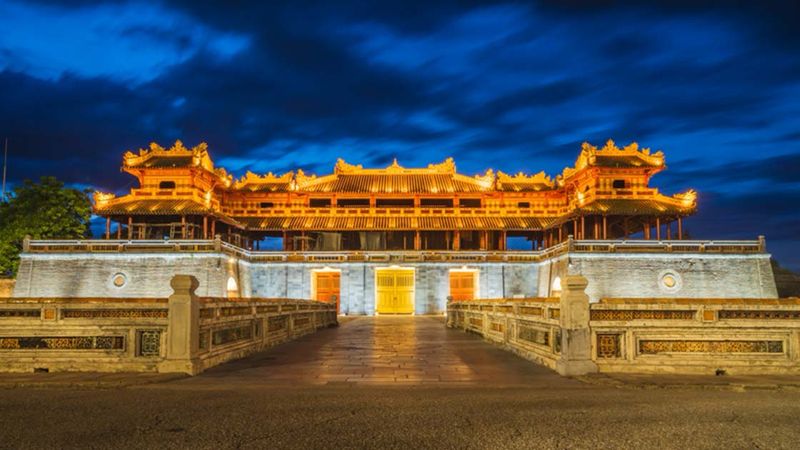
Standing within the massive stone walls of this UNESCO World Heritage site feels like stepping back in time to Vietnam’s imperial era. The sprawling complex once housed the emperor and his family, with ornate pavilions and secret gardens hidden throughout.
Many buildings still bear battle scars from the Vietnam War, creating a poignant contrast to the site’s magnificence. The Purple Forbidden City at its heart was once restricted to only the emperor himself.
I recommend visiting early morning to avoid both crowds and midday heat. The detailed craftsmanship in the remaining structures showcases the incredible artistry of Vietnam’s imperial craftsmen.
2. Thien Mu Pagoda
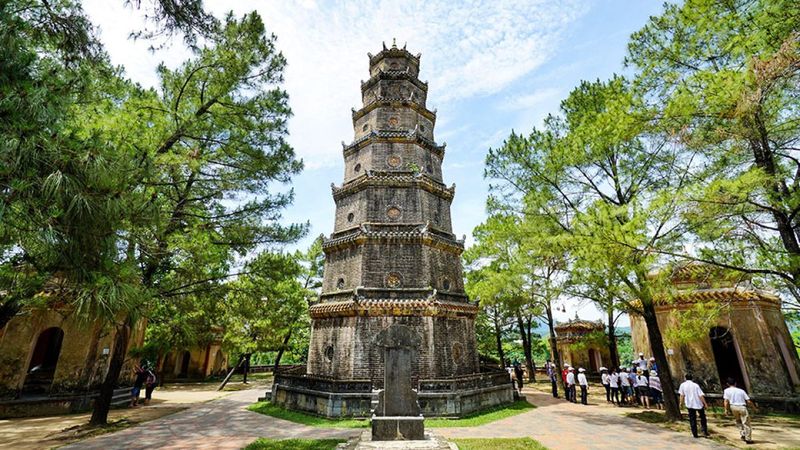
Perched majestically on a hill overlooking the Perfume River, this seven-story pagoda has become Hue’s unofficial symbol. Each level represents a different human rebirth, reflecting Buddhist philosophy in its very structure.
When I visited, monks moved quietly through the grounds, tending to gardens and prayer halls. The pagoda’s peaceful atmosphere makes it a welcome retreat from the bustling city.
Did you know this site played a role in anti-government protests during the 1960s? Behind the main tower sits the Austin car that carried monk Thich Quang Duc to his famous self-immolation protest in Saigon, preserving this powerful moment in Vietnamese history.
3. Tomb of Tu Duc
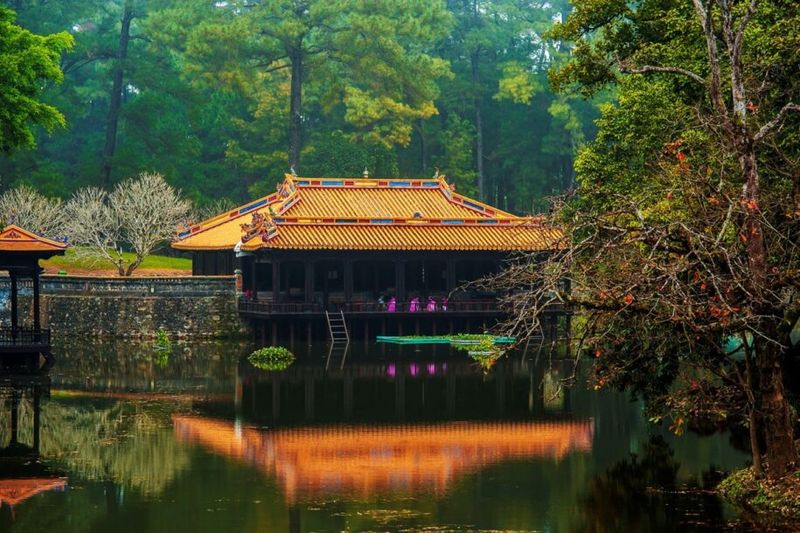
Hidden among pine forests, Emperor Tu Duc’s final resting place doubles as one of Hue’s most atmospheric attractions. Though called a tomb, Tu Duc actually used this sprawling complex as a retreat during his lifetime, enjoying poetry readings beside its tranquil lakes.
The grounds feature a perfect blend of natural beauty and architectural grace. Stone mandarins, elephants and horses stand frozen in eternal guard duty throughout the complex.
Ironically, Tu Duc isn’t actually buried here – his true grave location remains unknown! After the emperor’s death, all 200 servants who buried him were beheaded to protect the grave’s secrecy from potential looters.
4. Perfume River Cruise
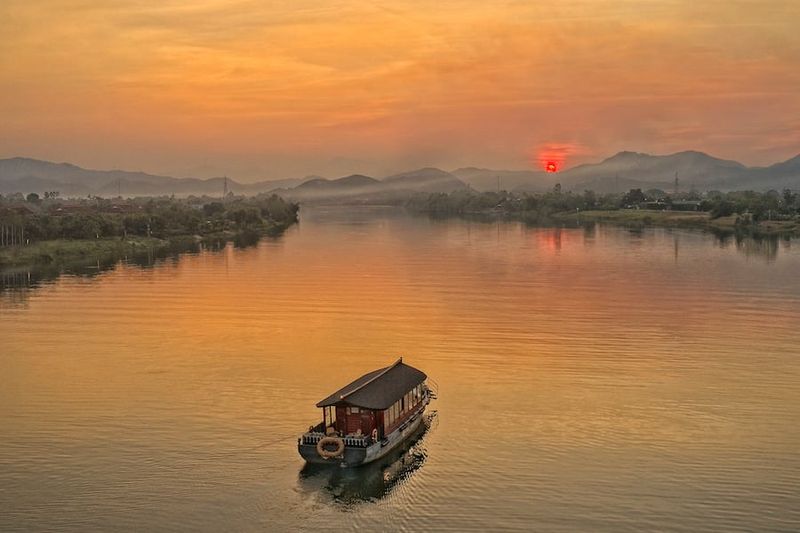
Gliding along the Perfume River offers a completely different perspective of Hue’s landmarks. These leisurely boat rides showcase the city’s most famous monuments from the water, where imperial rulers once traveled in dragon-shaped vessels.
Though called the “Perfume” River, it’s not the scent but rather the orchards that once dropped flowers into the water that gave it this poetic name. Sunset cruises are particularly magical, with the fading light casting a golden glow across the water.
Many boats offer traditional Hue folk music performances during the journey. I still remember the haunting melodies floating across the water as we drifted past pagodas and palaces silhouetted against the twilight sky.
5. Dong Ba Market
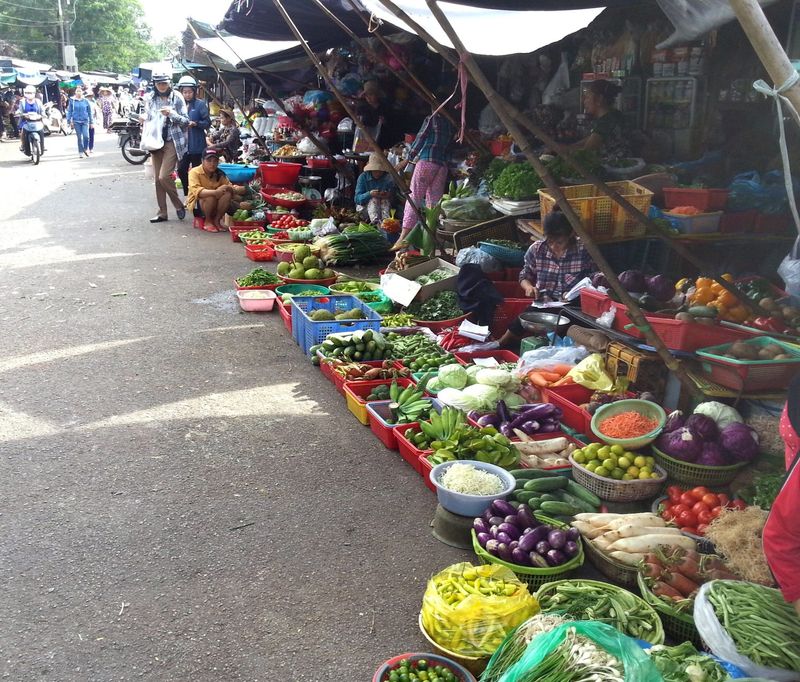
If you’re curious about everyday Vietnamese life, Dong Ba Market pulses with local energy from dawn until dusk. Vendors call out offerings while shoppers haggle over everything from fresh produce to handcrafted souvenirs.
The food section showcases Hue’s renowned cuisine in its most authentic form. I watched skilled hands prepare bun bo Hue (spicy beef noodle soup) and banh khoai (Hue-style savory pancakes) with practiced precision.
This market dates back to the early 1900s when it was established under Emperor Dong Khanh’s reign. Look for conical hat makers who can personalize these iconic Vietnamese symbols with your name written inside – a practical and meaningful souvenir from your Hue adventures.
6. Tomb of Khai Dinh
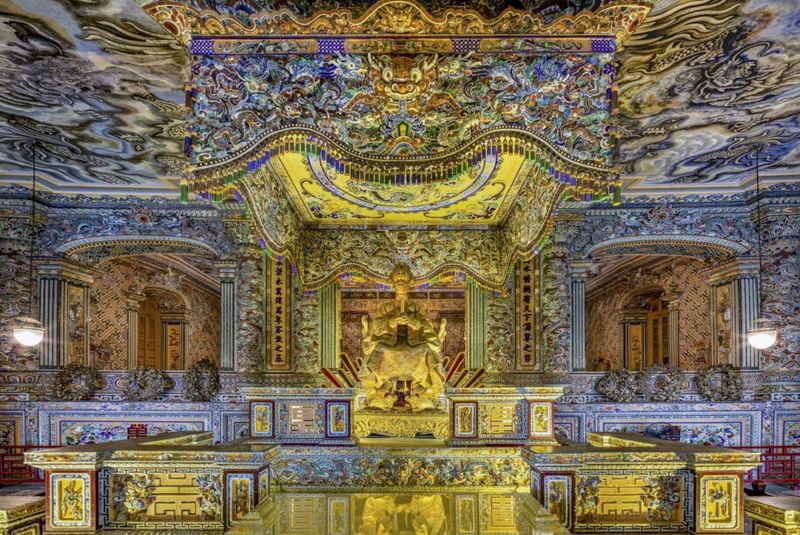
Unlike Hue’s other imperial tombs, Khai Dinh’s final resting place blends Vietnamese traditions with European influences in a striking architectural fusion. The tomb climbs dramatically up a mountainside, requiring visitors to ascend 127 steps to reach the main structure.
Inside awaits one of Hue’s most spectacular sights – walls encrusted with intricate glass and porcelain mosaics that shimmer in the filtered light. Emperor Khai Dinh spent 11 years constructing this elaborate tomb before his death in 1925.
How did they fund such extravagance? Controversially, the emperor raised taxes on peasants to finance his eternal home. Though smaller than other royal tombs, its unique blend of styles and ornate decoration makes it unforgettable.
7. Tomb of Minh Mang
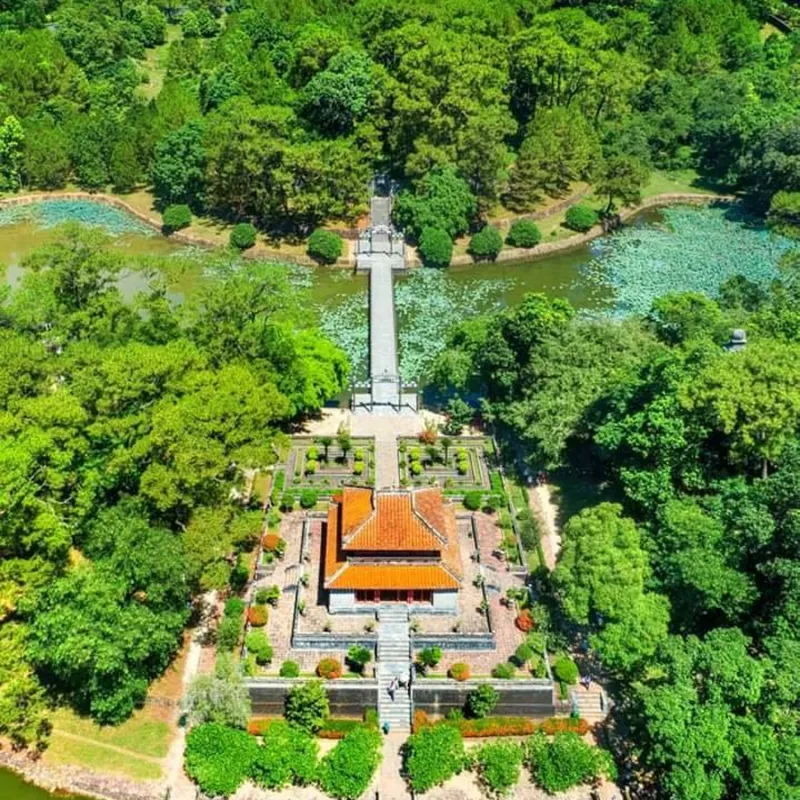
Harmony defines Emperor Minh Mang’s magnificent tomb complex, where perfect symmetry mirrors the Confucian principles he championed during his reign. Lakes, pavilions and courtyards flow together in an architectural symphony that celebrates the connection between human design and natural beauty.
The approach follows a central pathway through multiple gates, building anticipation before revealing the emperor’s final resting place. Forty structures comprise this sprawling site, making it one of Hue’s most extensive tomb complexes.
Though construction began in 1840, Minh Mang died before its completion. His son finished the project according to his father’s detailed plans. I found this tomb particularly peaceful, with fewer tourists than Tu Duc’s, allowing for quiet contemplation among the pines and pavilions.
8. Thanh Toan Bridge
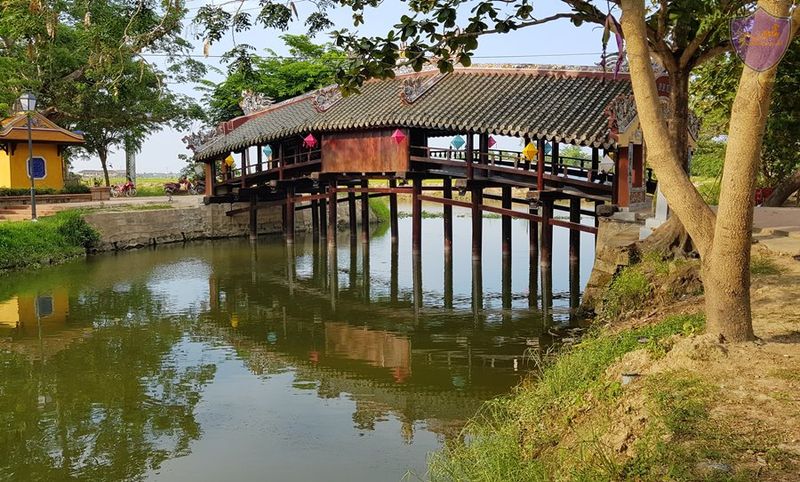
Just outside Hue’s city center, this charming covered bridge arches gracefully over a canal flowing through rice fields. Built in 1776 by the wife of a high-ranking mandarin, it served both as a practical crossing and a shelter for weary travelers.
The wooden structure houses a small shrine honoring the bridge’s benefactor. Locals still use this historic passage daily, blending centuries-old architecture into modern rural life.
When I visited, elderly villagers gathered beneath its roof to escape the midday heat, sharing stories and watching farmers tend nearby fields. A small agricultural museum nearby displays traditional farming tools and techniques, offering insight into the agricultural practices that have sustained this region for generations.
9. Tu Hieu Pagoda
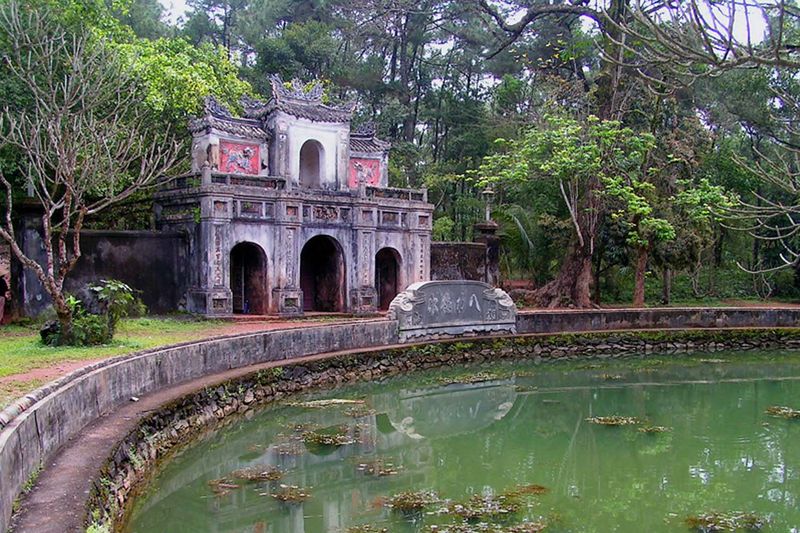
Serenity blankets this hidden gem where Buddhist monks move quietly through pine-shaded courtyards. Founded in 1843, Tu Hieu remains an active monastery where spiritual practices continue much as they have for centuries.
The grounds contain a crescent-shaped lotus pond at the entrance, symbolizing enlightenment emerging from worldly mud. This pagoda holds special significance as the spiritual home of Zen master Thich Nhat Hanh, who began his monastic journey here before becoming a globally renowned peace activist.
Are you seeking quiet contemplation? Far from the tourist crowds, I found myself alone with the sound of wind chimes and distant chanting. The half-moon pond, modest temple structures, and graves of royal eunuchs create an atmosphere of profound tranquility rarely found at busier sites.
10. Bach Ma National Park
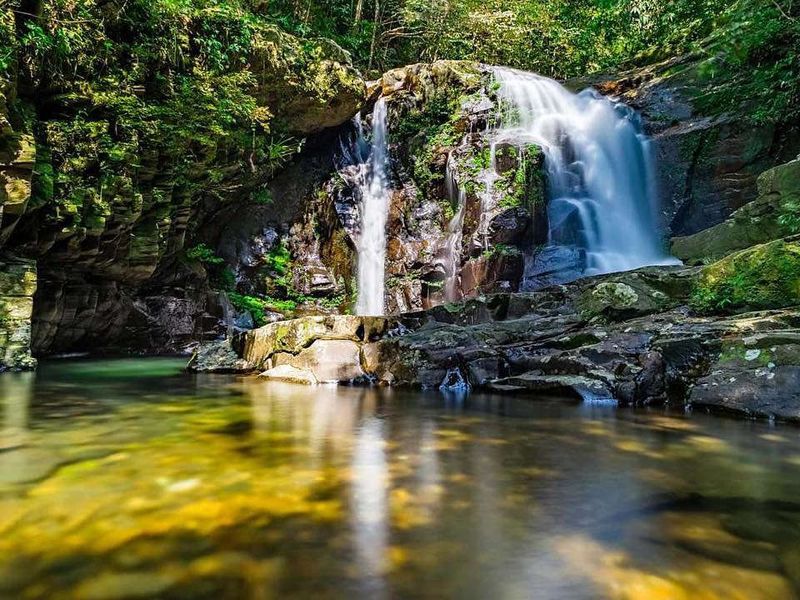
Rising dramatically from sea level to 1,450 meters, this biodiversity hotspot offers a refreshing escape from Hue’s summer heat. Five distinct climate zones create habitats for over 1,400 plant species and rare wildlife like the clouded leopard and Edwards’s pheasant.
Hiking trails lead to spectacular waterfalls where you can swim in natural pools beneath cascading water. The French recognized Bach Ma’s appeal in the 1930s, establishing a hill station retreat whose abandoned villas still peek through the jungle canopy.
The park’s name means “White Horse” in Vietnamese, referring to a cloud formation that resembles a horse galloping across the mountains. During my visit, mist rolled through valleys below viewpoints, creating an ethereal landscape that felt worlds away from Hue’s historical sites.
11. Tam Giang Lagoon
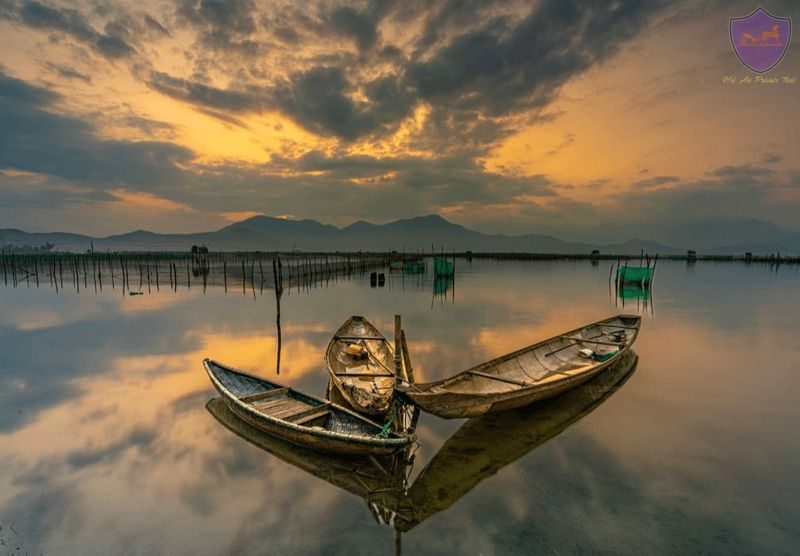
Stretching nearly 70 kilometers along Vietnam’s coast, this vast lagoon system provides a glimpse into traditional fishing communities largely unchanged by time. Wooden boats with distinctive round basket shapes dot the horizon while fishermen cast nets using techniques passed down through generations.
The lagoon’s ecosystem supports over 230 fish species and countless migratory birds. Sunrise transforms the water into a mirror of gold and pink, making early morning boat tours particularly magical.
I spent an afternoon with a local fisherman who demonstrated how to cast the distinctive fishing nets. His family has harvested these waters for seven generations. The lagoon faces environmental challenges from overfishing and development, making this cultural landscape all the more precious to experience while traditional practices still thrive.
12. An Hien Garden House
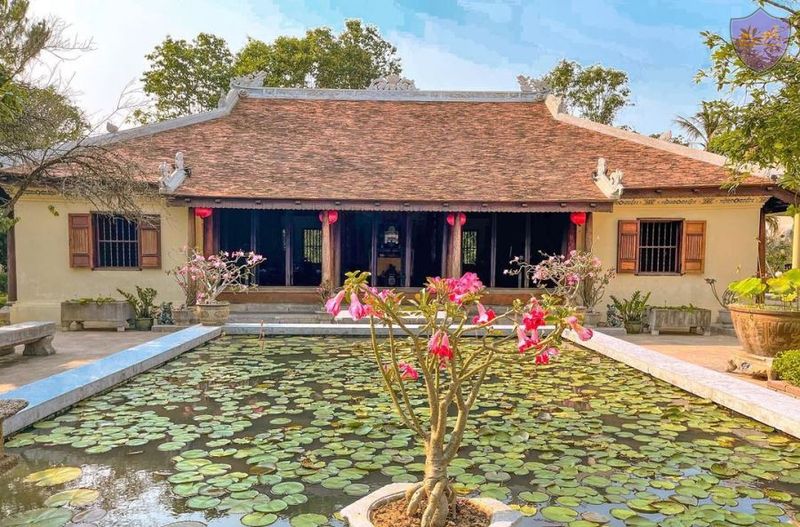
This exquisite traditional home offers a rare glimpse into the refined lifestyle of Hue’s aristocratic families during the 19th century. Princess Ngoc Son once lived in this architectural gem, which perfectly balances indoor and outdoor spaces according to feng shui principles.
The garden showcases bonsai masterpieces and ornamental plants arranged to create changing scenes throughout the seasons. Furniture inside reveals intricate mother-of-pearl inlay work characteristic of Hue’s finest craftsmanship.
What makes this house special? Unlike museum-like historic homes, An Hien remains a living space where descendants of the original family maintain traditions and welcome visitors. During festivals, traditional music performances bring the courtyard to life, just as they would have generations ago when mandarins gathered here for poetry competitions.
13. Hue Museum of Royal Antiquities
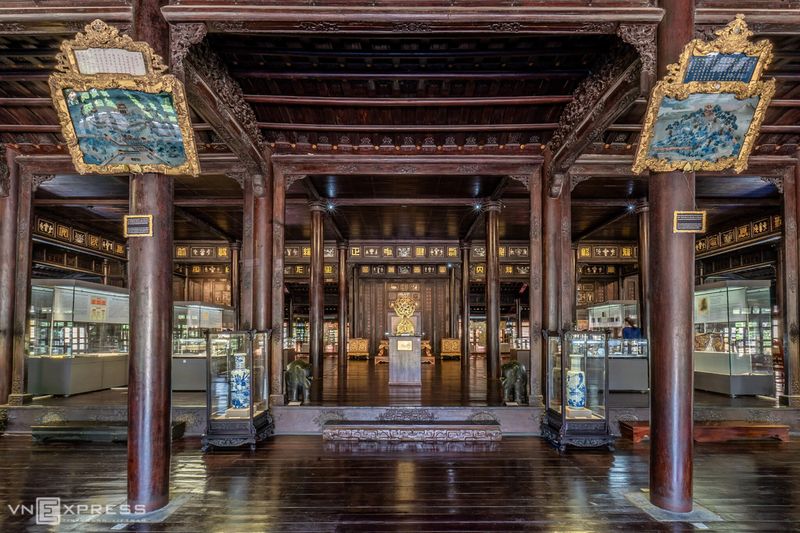
Housed in Long An Palace, this fascinating collection preserves the material culture of Vietnam’s last ruling dynasty. Royal clothing, furniture, personal items and ceremonial objects offer intimate insights into imperial life beyond what the larger monuments can convey.
The museum’s prized possessions include nine dynastic urns representing different Nguyen emperors, along with exquisite ceramics and jewelry. Gold leaf details still gleam on ceremonial items that once played crucial roles in court rituals.
This museum helped me understand how imperial symbolism permeated every aspect of royal life in Hue. Dragons, phoenixes and other symbolic creatures appear throughout the collection, each carrying specific meanings within Vietnamese imperial culture. Plan to spend at least an hour exploring the well-labeled exhibits that bring Hue’s golden age to life.
14. Lang Co Beach
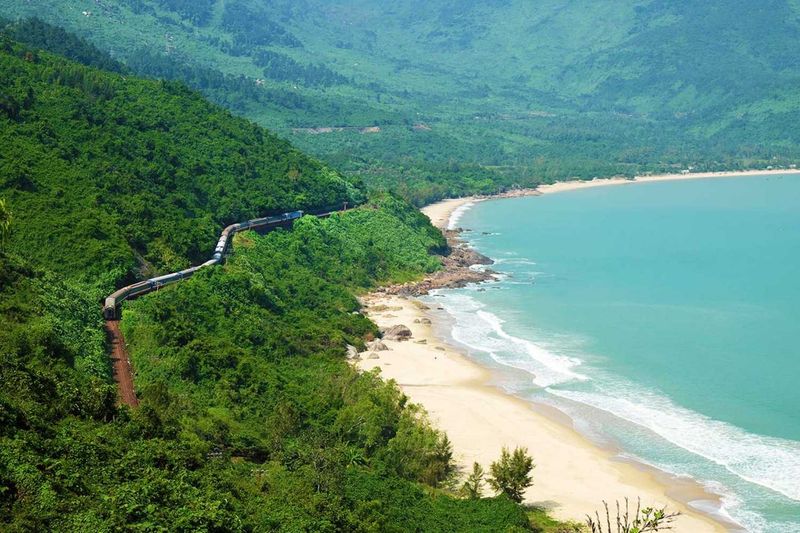
Just 30 minutes from Hue’s historic sites, this crescent-shaped beach offers a perfect contrast to temple-hopping with its soft white sand and clear blue waters. The dramatic backdrop of mountains meeting sea creates one of Vietnam’s most photogenic coastal landscapes.
Fresh seafood restaurants line the shore, where you can select your meal directly from tanks before it’s prepared. The fishing village at the beach’s northern end provides a glimpse of coastal life beyond the tourist areas.
Between Hue and Da Nang, Lang Co sits at the foot of the spectacular Hai Van Pass, made famous by Top Gear’s Vietnam Special. I recommend combining your beach visit with a drive along this scenic mountain road for unforgettable views of the coastline stretching toward Hue.
15. Vong Canh Hill
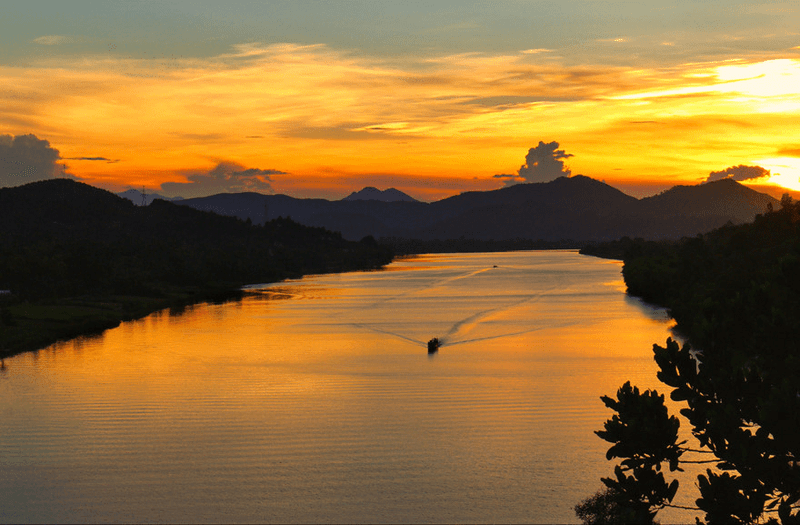
This hilltop viewpoint delivers the most spectacular panorama of the Perfume River as it curves gracefully through Hue’s landscape. French colonists recognized its strategic importance, building a small military outpost whose ruins still remain.
Photographers flock here for sunset when the river glows golden beneath the distant mountains. On clear days, you can spot several imperial tombs nestled among the hills, helping you understand why Hue’s rulers chose this landscape for their eternal rest.
My visit coincided with a brief rain shower that cleared just before sunset, leaving behind mist that hung in ethereal layers above the river. Though accessible by motorbike or taxi, the hill sees relatively few tourists compared to other attractions, offering a peaceful place to appreciate Hue’s natural beauty and reflect on its imperial history.
